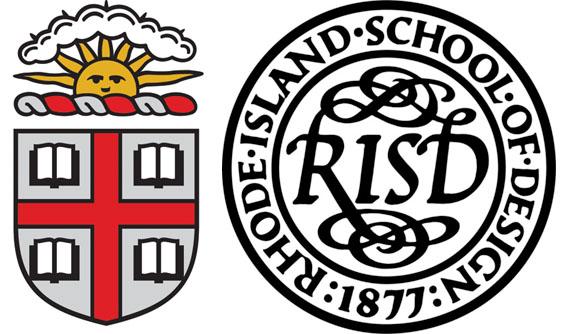For as long as anyone can remember, Brown and RISD have collaborated on programs, policies, and projects. But it wasn’t until 2007 that both institutions agreed to formalize a joint five-year program that would offer students the best of both worlds.
Now in its seventh year, the Brown-RISD dual degree program is in full swing with 73 students currently enrolled. Students applying to the program must gain admission to both schools. A committee of Brown/RISD faculty and admissions representatives then makes the final decision on who is admitted to the program.
At the end of the program, students receive a bachelor’s degree from each institution. Since its inception, 39 students have graduated from the program.
Lizzie Kripke, a biology concentrator and a recent graduate of the program, is one example of how the the joint degree program benefits students. Kripke was interested in the biochemistry of the camouflage mechanisms and visual patterns of squid-like creatures, which later influenced her paintings at RISD.
Brown and RISD students had been able to cross-register more than a century before the joint program was established — as early as 1902. “Brown students can be enriched by taking a number of studio offerings that we simply don’t provide,” said Christopher Dennis, deputy dean of the College. “RISD has a film and animation major, they have an illustration major, they an industrial design major, and a lot of our students find taking classes at RISD is a real eye-opener.”
Brown and RISD’s situation is unique, Dennis said, because it doesn’t suffer from a geographical disadvantage. Other institutions may have cooperative arrangements, but students may have to travel — even to other cities.
Currently, 66 Brown students are taking classes at RISD outside the joint program, and 304 RISD students are taking classes at Brown.
In addition to classes, which come at no extra cost, the agreement gives students access to each school’s amenities including courts, gyms, and tracks as well as lectures and performances.
The arrangement also supports interesting large collaborations like last year’s Techstyle Haus. In 2014, students from RISD, Brown, and the University of Applied Sciences Erfurt, Germany, designed and built a sustainable home as part of an international competition that featured 19 other teams.
Co-curricular organizations, the STEM to STEAM initiative, design initiatives, and joint grant proposals have also resulted from the continued exchange.
Administrators are currently in discussions about opening more dual degree options, increasing study abroad opportunities, and opening the current program to a wider net of students, according to Dennis.
“The future looks very exciting,” he says. It certainly seems so.

